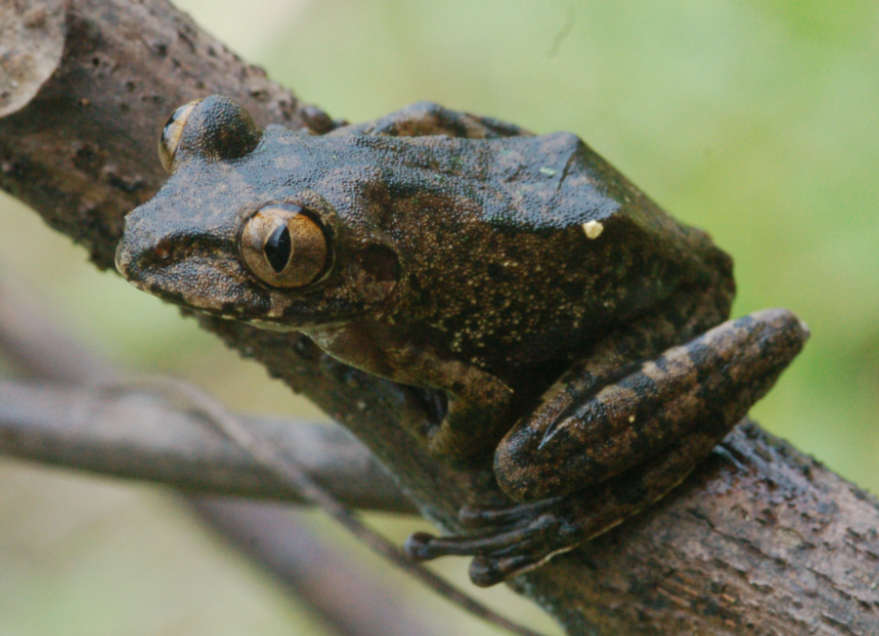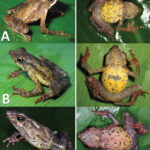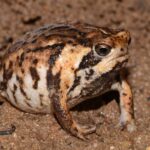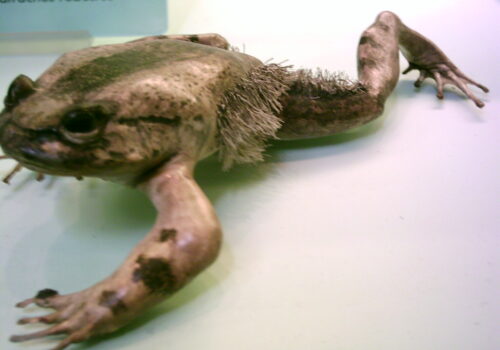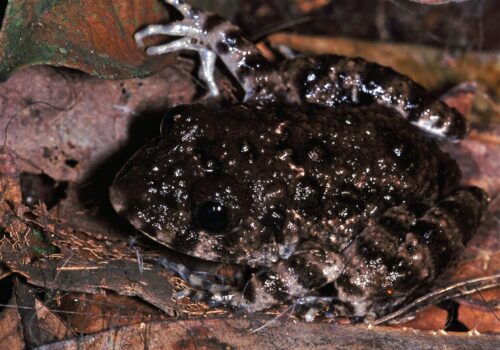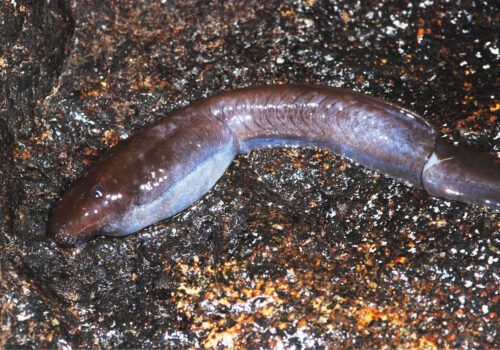The Enigmatic Beauty of Leptopelis millsoni: West Africa’s Graceful Tree Frog#
In the vibrant and verdant rainforests of West Africa, hidden amidst foliage glistening with evening dew, a distinctive call echoes softly through the warm, humid air. The voice belongs to none other than the Leptopelis millsoni, commonly known as Millson’s Tree Frog. With its extraordinary song, vibrant coloration, and captivating habits, this species enchants and intrigues naturalists as deeply as it does local cultures. Yet, for all its beauty, Leptopelis millsoni remains one of West Africa’s lesser-known treasures, quietly playing an essential role in rainforest ecosystems.
Taxonomy and Classification#
The scientific journey of Leptopelis millsoni begins in the family Arthroleptidae, a fascinating group of frogs endemic to sub-Saharan Africa. Within Arthroleptidae resides the genus Leptopelis, collectively known as bush frogs or tree frogs due to their arboreal lifestyles.
Leptopelis millsoni was first described by George Albert Boulenger in 1895, named to honor Mr. Alvan Millson, who collected the type specimen in the dense forests of Ghana. Over a century later, this charming amphibian’s taxonomic position remains stable and widely accepted. Genetic analyses have clarified some previously obscure relationships, firmly placing Leptopelis millsoni alongside its closest relatives Leptopelis macrotis and other bush frog kin, all renowned for their arboreal tendencies and enigmatic behavioral repertoires.
Natural Habitat#
A Jewel of West African Rainforests#
From Ghana and Ivory Coast in western Africa to Nigeria and Cameroon eastward, the natural range of Leptopelis millsoni encompasses lush, tropical rainforests, particularly favoring lower elevations and moist evergreen habitats. Often found in habitats of near-pristine condition, this frog thrives where humidity remains high throughout the year, and vegetation luxuriant and diverse.
The species prefers dense, undisturbed forests, frequently inhabiting vegetation near slow-moving streams, marshy clearings, or quiet pools within the expansive rainforest matrix. Dense foliage provides cover against predators and harsh environmental stresses, creating a paradise where the frogs spend their days concealed and motionless, almost invisible among green leaves and moss-covered branches.
To witness this tree-dwelling marvel, early evenings are most rewarding. Under the Serengeti canopy, silvery moonlight casts ghostly silhouettes on leaves, where these frogs awaken from daytime slumber to actively hunt and mate. Dappled rainforest understory, abundant in insects and moisture-holding plants, creates an ideal niche. Here, among leaves dampened by afternoon rains and evening fog, these amphibians occupy their favored habitats, actively contributing to the delicate ecological symphony that defines West African rainforests.
Physical Characteristics#
Graceful Camouflage and Artful Adaptation#
Measuring roughly between 5 to 8 centimeters in length, Leptopelis millsoni embodies elegance, distinctly slender yet robust enough for life among trees. Its large, expressive eyes — key features for nocturnal hunting — bear a mesmerizing golden or coppery hue, providing impeccable night vision for capturing prey under cover of darkness.
The frog’s skin is notably variable in color but often displays gorgeous shades of leaf-green contrasted with delicate brown markings. Some populations exhibit subtle mottling or a series of darker stripes along the back, perfectly blending into its leaf-bound home. The undersides tend toward pale cream or whitish tones bound by tiny speckles, offering minimal contrast when viewed against foliage from below.
The creature’s limbs are elongated, built for climbing and leaping with astonishing accuracy among branches and leaves. Well-developed toe pads serve as natural adhesive surfaces, providing stability and mobility even on surprisingly slippery surfaces during heavy tropical rains. Touching its skin gently would leave one feeling cool moisture, indicative of the species’ sensitivity to desiccation and the necessity of constant humidity in its habitat.
Behavior and Life Cycle#
An Evening Serenade: Calls, Courtship, and the Next Generation#
While predominantly nocturnal, twilight heralds a notable burst of activity for Leptopelis millsoni. Male frogs perch strategically on leaves and branches, positioning themselves prominently amidst greenery to issue their calming, melodious calls designed to attract receptive mates. These calls manifest as gentle, flute-like trills alternated with deeper croaks, effectively penetrating the dense vegetation through subtle yet persistent communication.
Upon attracting a female partner, yet another enchanting part of their life cycle unfolds. Female frogs lay clusters of eggs in carefully selected water bodies—shallow, temporarily flooded forests or calm pools that typically swell following heavy rains. Eggs, small jelly-coated spheres containing developing embryos, are judiciously positioned to optimize survival.
Traditional parental care is minimal, the adult frogs entrusting survival entirely to the eggs’ secure placement and nature’s cycles. Tadpoles hatch promptly, their sleek, dark bodies perfectly suited to aquatic environments. Initially herbivorous, these tadpoles graze on algae, plankton, and detritus in their ponds, growing quickly into miniature frogs capable of venturing beyond watery nurseries. Soon their tails are absorbed, limbs sprout fully formed, and young frogs bravely undertake their climb upwards into the forest canopy, continuing a renewed cycle of arboreal life.
Ecological Role#
Ambassador of Biodiversity and Balance#
Beyond their charismatic appearance and behaviors, Leptopelis millsoni plays pivotal ecological roles within West Africa’s forests. As voracious insectivores, they keep insect populations in check, feeding extensively on various beetles, moths, spiders, and other small arthropods, thus maintaining a balanced, healthy ecosystem.
Simultaneously, these frogs feature significantly in the forest food web as prey for an array of predators: snakes, birds, small mammals, and even larger amphibians regard them as an important food source. This delicate cycle ensures the overall health of the forest, contributing significantly to ecological resilience. Furthermore, amphibians such as Leptopelis millsoni serve as critical environmental indicator species, often reflecting habitat conditions and signaling changes in ecosystem integrity.
Threats and Conservation Status#
Confronting a Vulnerable Future#
Currently, the International Union for Conservation of Nature (IUCN) lists Leptopelis millsoni as Least Concern, largely due to its relatively wide and seemingly stable populations. However, this comfortable status does not grant immunity against risks. Habitat degradation from logging, agricultural expansion, and unchecked urban development pushes these tree frogs increasingly toward vulnerability.
Additionally, climate change introducing unpredictable weather patterns and temperatures may disrupt breeding cycles by altering rainfall and humidity regimes. Ongoing deforestation fragments critical habitats and introduces pollutants harmful to sensitive amphibian skin. Protecting existing habitats, encouraging eco-friendly agricultural practices, and expanding public awareness and appreciation remain vital to safeguarding long-term sustainability for this remarkable species.
Cultural and Scientific Significance#
While folklore featuring specifically Leptopelis millsoni remains sparse, frogs in broader West African cultures symbolize fertility, renewal, and harmony within nature. Scientifically, this species contributes to our understanding of amphibian biodiversity, forest ecosystem dynamics, and the impacts of environmental change. Their unique mating calls have been rigorously studied, helping researchers monitor ecosystem health, record changes in forest density, and detect early warnings of habitat disturbance.
Conclusion#
In the leafy heartland of West Africa’s rainforests, Leptopelis millsoni emerges as a quiet guardian of biodiversity, weaving an essential thread within nature’s intricate tapestry. By understanding its ecology, embracing its significance, and safeguarding its habitats, we ensure that future generations experience the delight it brings to this endlessly diverse planet. Let our curiosity and drive for preservation be inspired by this gentle amphibious ambassador, awakening us to the broader story our natural world has yet to tell.




